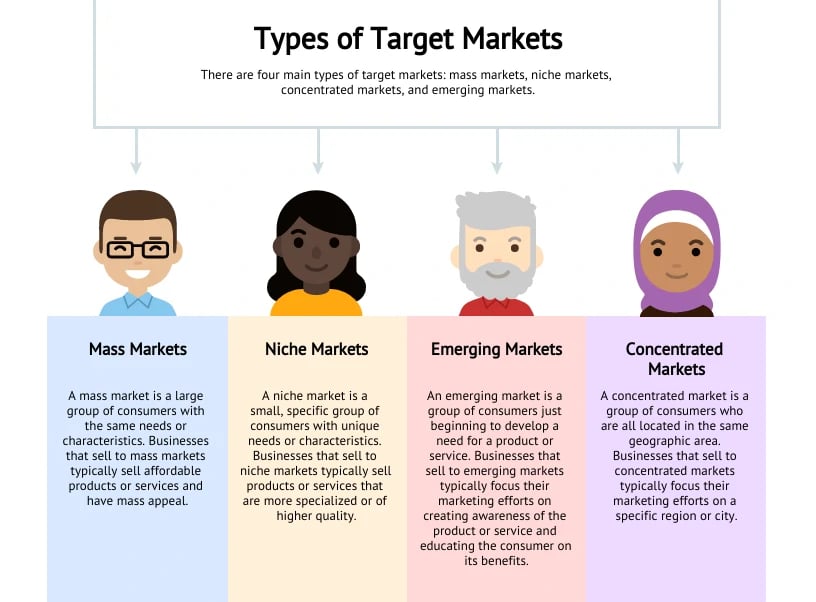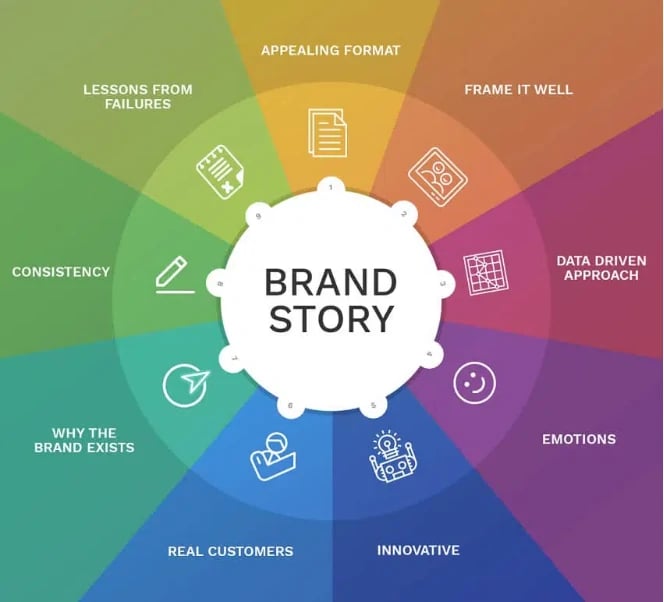While putting the hard work into something as crucial as a sales pitch, the key is to tick off the right boxes to close the deal.
A sales demo is a fantastic opportunity for your business to showcase the relevance and utility of your products and services and influence the purchasing decision.
This article will discuss some actionable and practical tips to ace your upcoming sales demo, which you should always allow your target to book from a professional-looking booking website.
We start with foundational aspects like identifying your target audience and further talk about ways to make your presentation even more engaging for your viewers.
1. Know your audience
It has to be the first and foremost step of delivering an impressive pitch that leaves an impact! But why does it play such a huge role?
A. The importance of understanding your audience
When planning a sales demo, the principal purpose is to convince the audience that your product or service can improve their lives. But to improve their lives, you must first identify the people you are targeting.
Thus, to tailor a pitch that can drive sales, you need to trace the group of people you are selling to. How to tap into their interests?
Simple, through research.
B. How do you research and learn about your audience?

To cultivate the desired customer base, here’s a 3-step drill to opt for:
- Delve deeper into the demographics. Ensure that you procure the complete information in your capacity. From communication preferences to educational backgrounds, each piece of data can help you prepare well for the pitch.
- Who are you competing with? You’ll never know when a potential competitor leaps and grabs the opportunity lying right before you. So assess your immediate competitors and predict their next move to stay ahead.
- Go above and beyond. Stay on that call for a little long. Take some time to follow up and update your lead with every move. It will help you build a stronger relationship with your prospect and elevate their interest in what you offer.
C. How to tailor your demo to your audience
Now that you have all the factors, it's time to sketch the real content. Interestingly, this step can be the easiest with the right creative approach.
Simply structure the gathered information into your pitch. It will help the demo sound more relatable, relevant, and captivating to the customers. In addition, you can employ elements like real-life examples and statistics to quirk it up.
For example: If your product is a portable and travel-friendly backpack, you can highlight how light, spacious, strong, and functional the bag is, compared to other brands. This example addresses the consumer's pain points and what can make them feel valued and encouraged towards your product.
2. Highlight benefits, not features
Salespeople simply can’t stop talking about the features of the product they are selling. And even worse, they often dodge the importance of relating these features with real-life problems. HubSpot says, “great marketing copy doesn't just sell a product, but it also builds a genuine connection with the audience.”
As a result, most of these sales demos sound like “all about the product, nothing about the user.” But, of course, you don’t want that for yourself. Do you?
A. What is the difference between benefits and features? Why are benefits more important than features?
- What is a feature?
Precisely, features define what your product is. All the extra miles you walked into bringing in a “never-before” perk to your product reflects on the features list. These elements are mostly planned, built, and executed to solve a purpose.
For a backpack company, the other built-in laptop sleeve is a feature.
- What is a benefit?
Regarding the backpack example, how will that built-in laptop sleeve help your customers? Well, they don't have to worry about undesired scratches, and they can keep their laptop safely inside the backpack. Now, this right here is a benefit.
And benefits are the only influential factors that can make your prospect purchase your product. So it is mainly about solving your audience's problems rather than adding something for luxury.
C. How to highlight benefits during your demo
When delivering your demo, interacting with the customers is the best way to emphasize the benefits. First, induce them to recollect their problems with similar products like yours naturally. Then, as soon as they recall the inconvenience, highlight how your product solves that problem.
This approach creates a flush of excitement in your audience to realize that your product can finally end their struggles. And voila, a conversion right there!
3. Keep it simple
Simplicity is not only the safest but also the most effective gateway to a customer’s heart. Yet, conversely, complexities are often bewildering and considered unnecessary in marketing.
But how can you simply save your sales demo? Let’s see.
A. Why simplicity is essential in a sales demo
Simple things are often more engaging, mainly because grasping them is more accessible. In this world of narrow attention spans, no one will allow more than five minutes to explain what’s on your plate. You can’t afford to lose those precious minutes to complex concepts, right?
B. How to simplify your demo
- Step down from the role of an industry expert.
All these years of research in your niche product have made you well-versed with the frequently used terms in the industry. But for the next 15 minutes, you can forget all about them.
Your customers do not need to look into your jargon vocabulary. But, on the other hand, using them too much can make your pitch boring and too technical for their liking.
- Summarise your pitch
Give a snippet of what you will discuss as soon as you start. It helps the audience identify what to expect. Then, you can close the demo with another summary, brushing over everything you’ve covered. That makes things easier for the listeners.
- Tell story

Storytelling is by far the most effective way of presenting a pitch. And the best part is it also helps to simplify the message you are trying to convey and captures the thought behind every process. It works incredibly to have the undivided attention of the customers.
C. Examples of simple sales demos
Here are two of the most impressive sales demos I ever came across:
Slack
This demo is an appropriate example of stretching the creative limits and selling a product without a sales rep. Here’s how it does that:- It has a unique approach that balances the two ideas of “product video” and “usage demo,” clearly depicting what to expect.
- It convinces you of the app's functionality by using its interface to demonstrate all the features.
- The “start the demo” button lets you explore Slack's potential to make communication easier. It covers everything from creating channels and forming groups to integrating tools like google calendar.
- Lastly, without any voiceover, it steers the conversation to land on a convincing CTA to drive sales.
Duolingo
- If competition is the biggest hurdle on your way, you should watch this demo to understand how to leverage testimonials in your favor.
- It leverages social proof to convince the audience “why” they should choose Duolingo over others.
- It starts with compelling testimonials (the best social proof) to encourage users to take a genuine interest in the product and learn more.
- It uses simple yet attractive animations to show how things work, backed with statistics to make it even more authentic.
In less than a minute, this demo effectively makes the audience believe that Duolingo can change how they learn a language. And mind you, all with some simplicity that didn’t need a hefty budget allocation or hours of work. How cool is that?
4. Use visual aids
An effective way of capturing someone's attention is often through visuals. So how can you apply for its benefits in your sales engagement? Let’s explore.
A. The importance of visual aids in a sales demo
65% of the human population are visual learners. In contrast, only 30% prefer verbal listening. That means less than one-third of the people you deal with will retain the information you are trying to pitch. But with some relevant visual aids, this number can shoot up to 95%!
A sales pitch is useless unless the audience can interpret and retain all the data you present. And visual aids can do the job for you.
B. Types of visual aids to use
Some of the most advisable visual aids to use are:
- Infographics: A colorful and informational infographic can serve both purposes of capturing attention and conveying a message. Make sure to add your logo for brand recall. Get it customized using a logo generator or similar tool.
- Videos - Motion graphics are a delight to look at. Stuffing videos with some information can make it an excellent communication method.
- Slides - Google and Powerpoint Slide presentations are a great way of summarizing your demo, adding a hint of professionalism, and making it quirky.
5. Practice, practice, practice
No matter how well-versed you are in your craft, you can’t rule out the significance of staying in practice. So here are some tips to keep in mind to deliver a polished demo that drives the results.
A. Why practice is crucial for a successful sales demo
You must demonstrate your objective to pitch a demo that helps your audience believe in your business. And undoubtedly, that is also one of the biggest challenges you may face in the process.
To achieve a pitch that works, you must communicate your idea in a way that influences your customers' decisions. And nothing but trial and error can help you achieve that goal.
Going back to your pitch from time to time, practicing it repeatedly, and making changes whenever needed are some of the many ways to excel at it.
B. How to practice effectively
Here are some actionable ways to work on your pitch and make it all set to deliver.
- Take external help who can act as a potential customer and provide you with constructive feedback to build upon.
- Record yourself while you practice. It will help you self-assess and notice the area of improvement.
- Practice in front of the mirror. Doing this over time (without getting too nervous) can boost your confidence and fine-tune your body language for a more engaging experience.
- Last but not least, read your pitch again and again. Make sure you have everything you want to talk about at your fingertips. It can automatically elevate the quality of your pitch.
Conclusion
Always remember that the principal motive behind your sales demo is to convert the leads into customers. You are in charge of convincing your audience that your business is worth their trust and investment.
Being familiar with your target audience, prioritizing benefits over features, keeping it simple, using relevant visual aids, and emphasizing practice are a few of the many effective ways to bring you closer to a successful conversion.
By following the tips outlined in this article, you'll be well on your way to delivering an excellent sales demo that leaves a lasting impression and drives your business forward.




